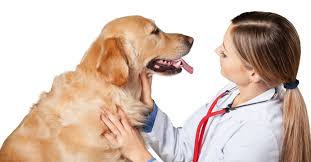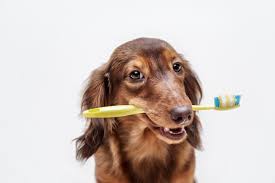
Sometimes, keeping your pet's teeth healthy can feel like a big job. Luckily, our practice provides advanced veterinary dentistry services in addition to basic dental care. This includes routine care such as cleaning, along with oral surgery and periodontal treatments.
Because our pets don’t brush their teeth every night before bed like we do, tartar can firmly adhere to the teeth. In order to remove this tartar, we perform dental scaling, our most basic dental procedure. During the scaling process, our practice uses ultrasonic power scalers as well as handheld instruments to remove this tartar from the surface of the teeth, both above and below the gum line.
Tooth extraction is the most common type of oral surgery that we perform. It is the goal of our practice for your pet to retain as many teeth as possible. However, sometimes an extraction is the only option to relieve pain or ensure that periodontal disease does not advance. We utilize anesthetic gel and local anesthetic injections to reduce pain. We closely monitor your pet the entire time they receive anesthesia. If a diseased tooth isn't extracted, it can compromise the surrounding tissue and neighboring teeth. If caught early, there are more treatment options available for periodontal disease.
Anesthesia is needed for dental procedures. Because of this, we first perform a full physical exam and check or run blood tests. During anesthesia, our practice keeps an eye on oxygen saturation levels in their blood along with their blood pressure, heart rate and temperature. In order to help maintain the health of your pet’s mouth and teeth, you should bring your pet in for a dental check-up once a year. During these routine exams, our practice includes a general dental exam, and we will advise you if a COHAT (complete oral healthcare assessment and treatment) is needed.
Catching dental problems in the early stages can greatly help your pet in the long run.
Contact our practice right away if your pet experiences any of the following. Keep in mind that even animals with significant dental disease may not have any of these signs, which is why a routine dental health exam is very important:
- A yellowish-brown crust of tartar around the gum line
- Line of redness or gingivitis where the tooth meets the gum
- Chronic bad breath
- Your pet shies away when you try to touch their mouth area
- Excessive drool
- Dropping food when eating
- Bleeding in your pet’s mouth
- Loss of appetite or weight loss
- Missing, loose or broken teeth
Grading of Dental disease
When your veterinarian evaluates your pet's teeth and finds disease of any grade below, a Complete Oral Healthcare Assessment and Treatment will be recommended
- Grade 1: Gingivitis, but no bone loss **aim to complete dental cleaning here or earlier!**
- Grade 2: Up to 25% bone loss (periodontal disease) **periodontal treatment will be needed, extractions may be needed**
- Grade 3: 25-50% bone loss (periodontal disease) **periodontal treatment will be needed here, extractions may be needed **
- Grade 4: more than 50% bone loss (periodontal disease) **extractions will be needed here**
The Indian Trail Animal Hospital Complete Oral Healthcare Assessment and Cleaning includes:
- Anesthesia (and associated safety-related services like pre-anesthetic bloodwork, IV catheter/fluids, monitoring, warming, and monitored recovery)
- Oral antibacterial rinse (to reduce bacteria before cleaning)
- Careful evaluation of each tooth with a periodontal probe. We chart the teeth and note abnormalities so they can be discussed with you and monitored. Any teeth that need additional treatment will be discussed with you, and the work will be performed with your permission before anesthesia is concluded.
- Cleaning using an ultrasonic scaler, then hand scaling and subgingival cleaning. Subgingival cleaning is the most important, but cannot be seen by the pet owner. If the infection below the gums isn't removed, the disease will continue!
- Dental radiographs (owner permitting) - radiographs allow us to see the entirety of the tooth root that cannot be assessed on oral exam alone. We don't want to miss periodontal bone loss, tooth root abscesses, or fractures
- Thorough polishing (this takes time!) with fine-grit pumice to remove tiny scratches in the teeth, which would encourage further buildup
- Fluoride application
- OraVet wax sealant to repel water and tartar for 1-2 weeks until you can restart or be trained on home dental care
Periodontal disease - the most common disease affecting companion animals
Over 85% of dogs and cats over 3 years of age have periodontal disease, and for some, it can start as early as 2 years. Many owners believe that their animal's poor oral health isn't uncomfortable or harmful. Unfortunately, our pets are unable to communicate the discomfort and disease they are experiencing. They may be slightly more withdrawn or sleep a little more, behaviors that are often attributed to advancing age or other causes. Even in the final stages of periodontal disease, where teeth are loose and deeply infected, most pets will keep eating because of their survival instinct.
If left untreated, periodontal disease can negatively affect your pet's quality and length of life. Bone loss and infection can cause damage to the heart, lungs, liver, and kidneys. In humans, we know that the risk of acute heart failure in people is five times greater if periodontal disease is present. One of the primary reasons that we and our pets enjoy a longer lifespan today is because of better oral health.
"Doggie Breath" Points to Danger
Plaque is the invisible film we brush off of our own teeth every day. This film is made up of bacteria and food particles and leads to inflammation of the gums (gingivitis) and bad breath (halitosis). Plaque mixes with minerals in drinking water and a cement-like brown substance (calculus) begin to develop on the teeth causing more gum inflammation and eventually bone loss.
"Doggie Breath" is not normal, but is actually an important early sign of periodontal disease. But it doesn't end at bad breath. Besides bone and tooth loss, the serious effects of this condition come from the spread of bacteria to the internal organs. Every time your pet chews, bacteria are injected directly into the bloodstream, damaging the kidneys, liver, heart and other vital organs.
If you smell doggie breath at home, it is time to schedule an appointment with one of our friendly veterinarians!

Tooth Resorption and your Cat
Tooth resorption (previously known as FORLs) is one of the most painful oral afflictions in cats. It affects 60% of cats over 6 years of age. Visually, the resorptive lesions appear as holes in the teeth. Once the defect extends through the enamel and into the dentin, the tooth is sensitive and painful. These teeth require extraction to eliminate pain and the opportunity for continued infection. Dental radiographs are used to help diagnose the condition under the gumline as it can appear anywhere in the tooth structure.
Due to the significant effect that tooth resorption has on quality of life, early detection through dental examinations and sedated dental radiographs is essential. There is, unfortunately, no prevention as this is a genetic condition.

Home Dental Care for Your Pets
Good home dental care for your pet can help increase the time between needed dental cleanings.
The main goal of home care is plaque removal. If plaque is not removed, it leads to calculus formation, which cannot be brushed off. Once plaque develops at the gumline, gum irritation called gingivitis becomes a problem. Next is an infection and periodontal disease, followed by tooth loss.
Home dental care should be used daily. If gingivitis appears, however, a professional complete oral healthcare assessment and treatment (COHAT) is recommended.
Brushing - We recommend a daily application of enzymatic flavored toothpaste for dogs. Never use human toothpaste which would cause them to ingest a potentially harmful amount of fluoride. While daily application is best, any frequency is helpful. Wiping it on primarily the outer and upper surfaces of the teeth, especially where the tooth meets the gumline will help the most. We like positioning the pet to face away from us as we brush the teeth, which seems to be accepted better than a face-forward position.
Dental treats - Daily dental treats that are approved by the VOHC (Veterinary Oral Health Council) are 3rd party tested and proven to be effective at removing some plaque. No dental treat will remove all plaque, so we suggest brushing daily, too. Some veterinary products may not have the VOHC seal, but still be recommended based on published veterinary studies of efficacy. There are a variety of formulations and styles and we'll be happy to discuss recommendations with you at your next veterinary visit.

